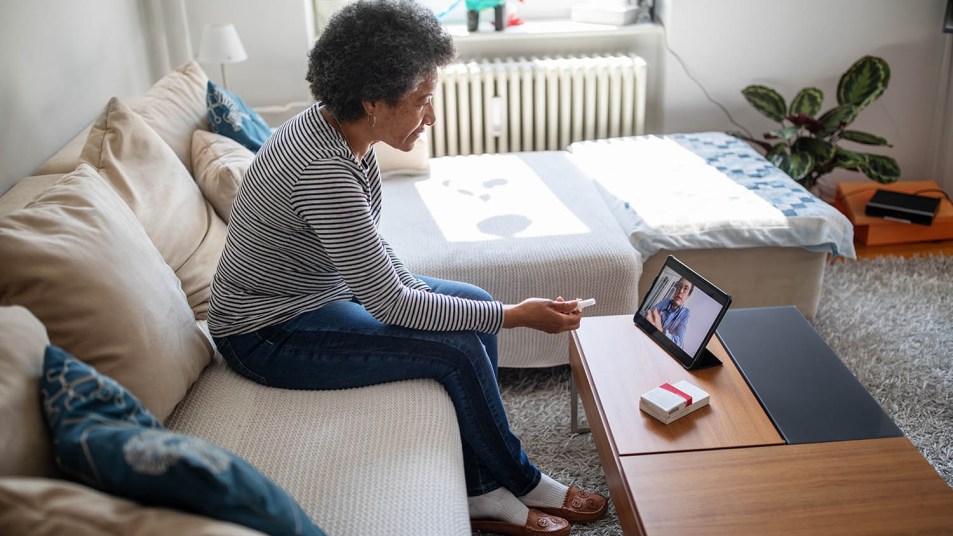Doctors Share 6 Tips for Getting the Most From Telehealth Appointments
Maximize the benefit of your next visit.

Virtual doctor visits are soaring in popularity, as we increasingly seek out medical treatment from the safety of our own homes rather than making a trip to the doctor’s office. But online and over-the-phone visits can take some getting used to! Here, our panel of expert physicians shares six ways to optimize your next telehealth appointment.
Know when to go.
A wide array of health concerns can be addressed via telemedicine. “The most common are sore throats, upper respiratory infections, sinus infections, rashes, UTIs, and medicine refills,” says Mia Finkelston, M.D., the medical director of Amwell, a provider of telehealth technology and services. “A lot of folks wonder if the care will be inferior to a brick-and-mortar appointment, but doctors are often more focused in this intimate setting, and take more time with patients, as they show off their ‘webside’ manner.”
Choose your tech.
Just get out your smartphone (60 percent of appointments are done this way), computer or iPad, and download FaceTime, Skype or Zoom. “Ask your doctor if she has a portal,” says Joseph C. Kvedar, M.D., a professor of dermatology at Harvard Medical School and President of the American Telemedicine Association (ATA). “Pharmacies like CVS and Walgreens also have telehealth apps, and most healthcare plans let you access a clinician.” If you’re not familiar with the platform your provider is using, don’t be afraid to let them know. “You can say, ‘I like FaceTime because I use it to talk to my grandkids — would it be okay if we use that instead?’” says Dr. Kvedar, assuring that your comfort is paramount.
Set the stage.
If you can, be sure to have access to natural light, advises Dr. Finkelston, explaining that your doctor may ask you to get closer to a window to help her inspect a rash or irritation. And don’t be surprised if your visit includes “charades”: “If you have a headache, for example, I may ask you to do ‘funny’ things, like smile so I can see your teeth, to rule out a neurological issue.” With a little flexibility, you can create the hands-on feel of a real-life visit.
Collaborate with your doctor.
Your appointment is an opportunity for you to help your doctor craft a care plan, says Dr. Kvedar. “If you have high blood pressure, for instance, bring your cuff and a list of recent BPs.” And jot down questions like, “If I meditated or exercised, would that help?” says expert Maggi Cary, M.D., Maggi Cary, M.D., author of Telemedicine and Telehealth and faculty member at Georgetown University School of Medicine. “Always be open with your concerns.”
Share feelings, too.
Virtual visits for mental health are also soaring, says Dr. Cary, noting that this format is ideal for talk therapy. “Share everything you’re feeling — even little things like if you want to move farther away from the camera because you feel exposed.” Some folks who live with several people even take visits in their car for complete privacy.
Ask what’s next.
“End your appointment by asking about next steps, like, “Am I seeing you for a follow-up in X days?’” urges Dr. Finkelston. About 80 percent of patients get the treatment they need on their first televisit, but 20 percent are referred elsewhere. Being clear on the plan boosts your health and ensures your relationship with your doctor flourishes — in the real and virtual worlds.
A version of this article originally appeared in our print magazine, Woman’s World.












